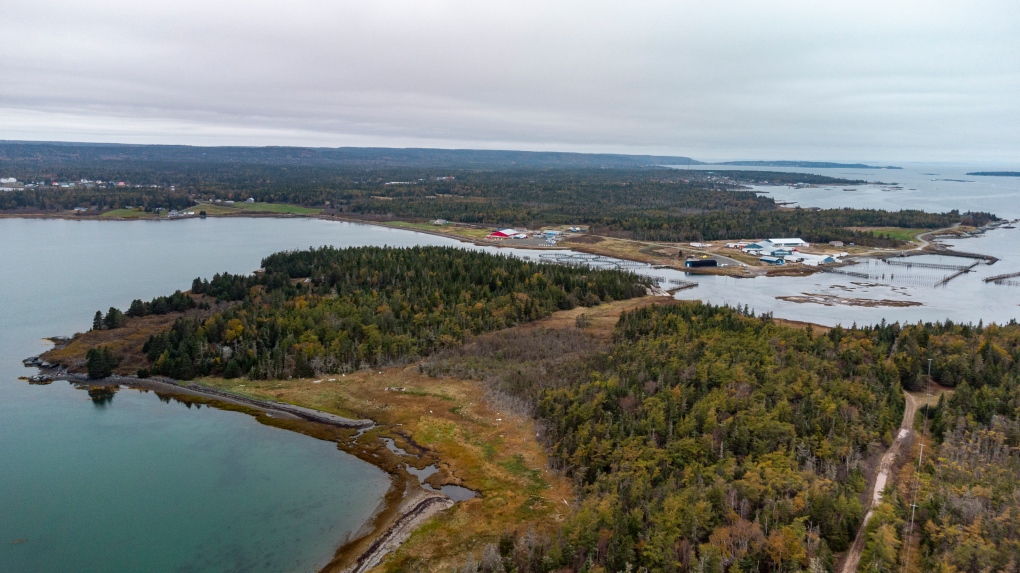World
N.B. island once owned by American now preserved forever after acquisition by Nature Trust of New Brunswick

A New Brunswick island in the Bay of Fundy that can be accessed by foot when the tide is low has officially been acquired by the Nature Trust of New Brunswick, which is promising its preservation forever.
Known as Ross Island after a European settler, the island was owned by a New York man up until 2021, when he was approached by the Nature Trust.
The 372.9 hectare island – slightly larger than New York City’s Central Park – is a sanctuary for migratory birds, who use its’ salt marshes as a stopover.
It also boasts rugged coastlines and coastal forest, perfect for a range of sea and plant life.
“He was kind of happy to see it go to conservation, and we worked with him through a negotiation process to acquire it,” said Jon MacNeill, communications manager at the Nature Trust.
Through fundraising efforts, people donating from as far away as Europe, and some help by both levels of government, the Nature Trust secured the island for $1.3 million.
Ross Island spans an impressive 372.9 hectare’s, which is slightly larger than Central Park in New York City. (Google Earth)Ross Island sits just 350 metres from Grand Manan Island, so when the tide is low people can walk along the ocean floor to access it.
It has about 10 kilometres of hiking trails. Work has been ongoing since its acquisition to repair those trails, with help from the Grand Manan Trails Association.
 Ross Island is seen just east of Ingalls Head, N.B. (Google Earth)On Saturday, a grand opening was held despite the rain to celebrate the acquisition and welcome visitors onto the island.
Ross Island is seen just east of Ingalls Head, N.B. (Google Earth)On Saturday, a grand opening was held despite the rain to celebrate the acquisition and welcome visitors onto the island.
MacNeill says it’s the largest single piece of land the nature trust has acquired.
“We definitely encourage people to get over and to experience it,” he said. “Because when we acquire these lands, sometimes through purchases, sometimes through land donations, the point is really to make these spaces accessible for people. It’s also to preserve the habitat and to keep hold of kind of the ecological wonders that we have in New Brunswick and along the Bay of Fundy coastline.”
 An aerial view of Ross Island and how close the island sits to the rest of New Brunswick. (Courtesy: J. Edward Hurley)Checking the tide schedules is important before visiting.
An aerial view of Ross Island and how close the island sits to the rest of New Brunswick. (Courtesy: J. Edward Hurley)Checking the tide schedules is important before visiting.
MacNeill advises to start the trek about an hour and a half prior to low tide, and returning about an hour and a half before high tide.
But it’s worth the adventure he says.
“When the tide is fully out, it’s really cool. There’s all these little tidal pools and neat little organisms that you can see,” he said. “There’s like, sea sponges and anemones and just really, really neat, benthic organisms, which are the kind of creatures like crabs and other things that live either in or on the sand.”
That network of organisms are critical to supporting the rest of the Bay of Fundy, including the whales and porpoises many come to the area to see.
 Some of the tidal pools seen at Ross Island. (Courtesy: Nature Trust of N.B.)While people are encouraged to visit, you can’t camp on any of the Nature Trust’s conservation areas – but Ross Island is a little different when it comes to another human activity.
Some of the tidal pools seen at Ross Island. (Courtesy: Nature Trust of N.B.)While people are encouraged to visit, you can’t camp on any of the Nature Trust’s conservation areas – but Ross Island is a little different when it comes to another human activity.
“Ross Island is one of the preserves that you can hunt at because traditionally people from Grand Manan use it for hunting and the Passamaquoddy used it for hunting and other Wabanaki Nations,” MacNeill said. “So we thought it was important to kind of honour that tradition so you can hunt on the island.”
MacNeill says there was an effort in the nineties to acquire and preserve several New Brunswick islands, including New River Island, Frye Island and South Wolf Island.
The Nature Trust has conserved over 12,000 acres total across the province.


)






